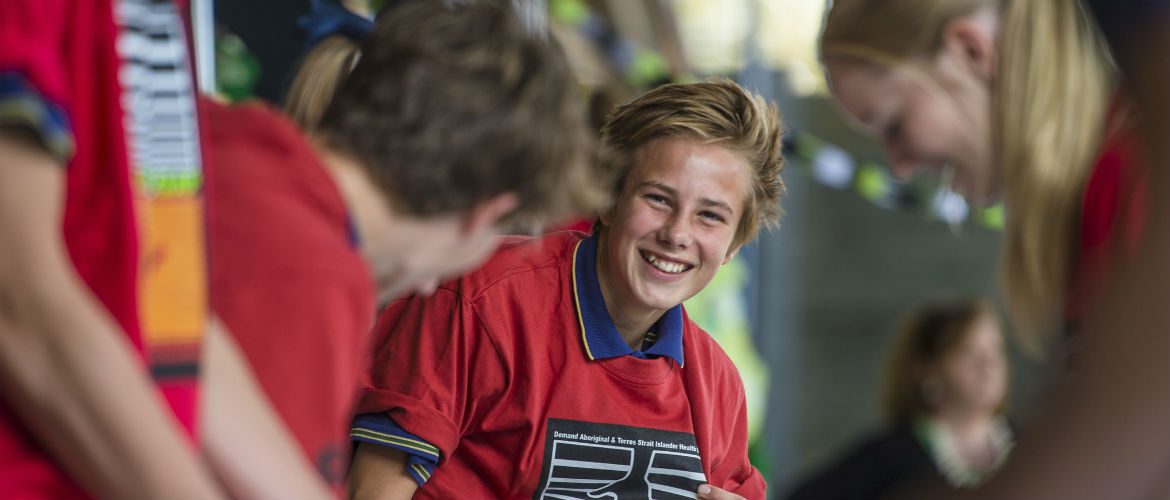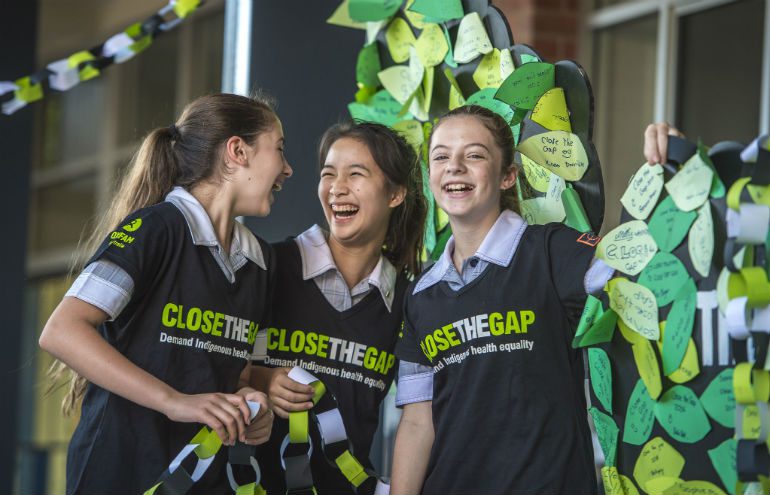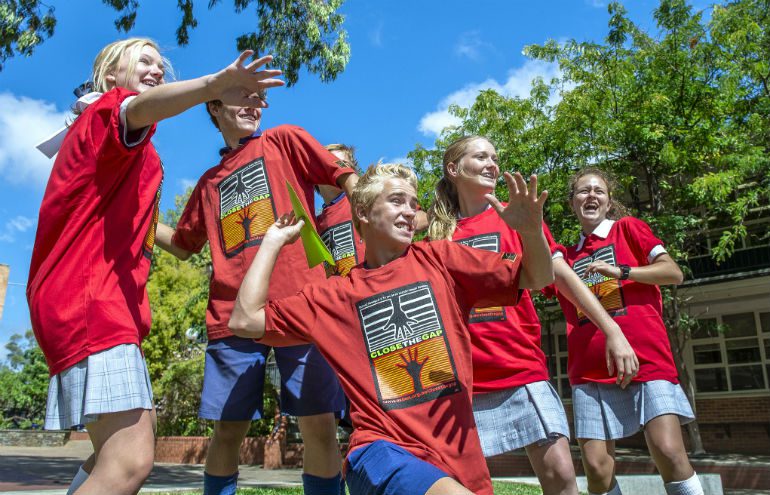
With registrations pouring in for National Close the Gap Day 2016, we hear from one school about how to hold activities that inspire a whole school.
Register your school for National Close the Gap Day
In the shadow of Close the Gap’s 10th anniversary, we are so proud to say that this year’s National Close the Gap Day (NCTGD) was the biggest in history. And out of the unprecedented 1,596 events held around the country, around 350 of these were held by schools!
More than 92,000 students and teachers around the nation took action to demand Aboriginal and Torres Strait Islander health equality. That’s almost enough to fill the whole MCG.
Imagine the roar of the crowd during the Boxing Day Test, and imagine that power used to stand in solidarity and call for change.
So many schools across Australia impressed and inspired us with their events. So we tagged along to an event held by veteran NCTGD participants Pembroke School in Adelaide to get the scoop on their experience and why they’ve been proud Close the Gap participants for the past four years.
Here’s Pembroke School’s Head of Humanities, Alexandra Piggott, in her own words:
Why we love National Close the Gap Day
We like taking part in National Close the Gap Day because it’s about raising awareness, and engaging more deeply with the issues.
We have a number of Indigenous students at our school, so we like to demonstrate really early on in the year that we have a connection to the issues affecting some of them and their communities, and that as a whole-school community we recognise these issues. We want to raise awareness together to combat them.
Activities as unique and individual as our students
We leave the activities completely up to the students. Our students tend to go for activities that are art and creativity-oriented — that way we everyone wants to be involved in doing it!
They also love the petitions — they are a big part of our lunchtime event every year that students really like, and we also keep the petition in the front office for visitors to sign as well.
In the first year, the students created a huge canvas with ‘Close the Gap’ written on it, and students came and covered it with hand prints in black, white and green. It’s something the students still love and is displayed every year.
In our second year, the students wanted to create a really big impact that reached out to the whole school, so they decided to create a giant paper chain. At lunch time on NCTGD, all the students came and wrote messages about Close the Gap on a piece of black, green or white paper and created sections of links out of them — we ended up making more than 300 metres of chain!
The chain was draped around the whole school so show how far reaching the issue is, but that it’s one that connects us all — we still have a section that we bring out each year too.

Last year, the students wanted to embrace symbols of life in a hopeful way, so they created the Close the Gap ‘trees of life’. They were wooden trees that had Close the Gap 2014 written on them, and the students who organised them created hundreds of leaves in different shades of green.
As part of the lunchtime event, students wrote a message of hope for Close the Gap on the leaves and stuck them to the tree — it was a really beautiful visual symbol.
This year, the boys came up with paper plane making and flying competition. The committee was divided into four groups, each with an activity to manage — plane-making, petition signing, the plane flying competition and creating a plane display, made by hanging the planes on strings.”

Student-led planning and implementation
We tend to run our activities as a cross-disciplinary event for the whole school. We want our students to have the freedom to run it however they like, and don’t want to box it up or confine it.
Our activities are completely run by students in Year 9, and we make it available for whoever in that year level wants to come along to our meetings. Our Student Voices group (Year 9 student leaders) are also included, as this way more boys are involved.
They then form a committee, and Year 10 students who have been part of the previous committee come along to mentor the new committee — not to drive or tell them what to do, but just to support them and use their experience to talk about some of the problems and challenges they faced, and how they got around it.
Usually there are around 15 kids on the organising committee, plus eight or so from the previous committee. They love getting back involved for a second year.
The timeline is always very short as this gives it a sense of urgency and everybody is very motivated to get it organised. Doing it over four weeks means there is great focus and energy. The kids are keen to get down and busy with it rather than it ramble on over the term.
How Oxfam provides support
The How to Student Guide is very helpful. We always use it, especially as it gives really useful background and context for the students in a way they can relate to.
As part of their event the students create a PowerPoint, which gets used before and during the event, and we always use the materials in the pack to help put it together. The video is particularly useful.
A huge thank you from us at the Schools Program to Pembroke School and the hundreds of others schools who participated this year! Together we will Close the Gap.
Register your school for National Close the Gap Day 2016 and receive our handy resources.